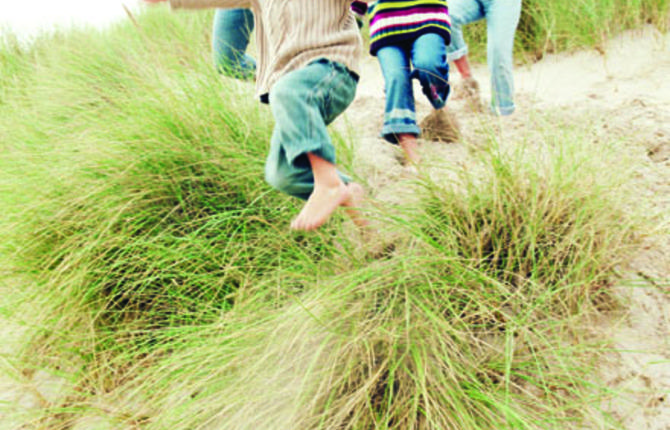
Busy or bust: road trip tips
By Heather Lee Leap
For some parents, kids are just the nudge they need to dust off the passport or cash in the frequent flyer miles. Destinations we’ve longed to see have a stronger pull when we have a child with whom to share them, but elementary-aged kids are an active bunch. They are also vocal, opinionated and can be keen negotiators. You can no longer plan a museum tour to coincide with naptime in the stroller and they demand more action than chasing butterflies in the park or stopping by a playground after lunch.
Families travelling with grade-schoolers need to strike a balance between adult pursuits and kid-friendly activities. They can also plan ahead to make slower-paced, quiet activities more enjoyable for their children.
Before Madeline Landis and her husband Tim took their children to Paris, Madeline created a museum scavenger hunt for them by printing photos of sights they would visit. “Since they had seen the photos and we had talked about them before hand, it provided some excitement in the museum as they discovered the items and looked at them in person,” she says.
In their book Family on the Loose: the Art of Traveling with Children (Rumble Books, 2012), Bill Richards and E. Ashley Steel provide museum scavenger hunt ideas for parents not up to making their own. They recommend parents provide distractions for their children, freeing themselves up to “look, listen and reflect,” while the kids are busy with portable hands-on activities. “Time the museum visit or other quiet attractions for when kids are naturally calmer and more able to focus, such as first thing in the morning,” suggests Steel. Then, armed with a snack, a sketchpad and some coloured pencils or modelling clay, kids can try their hand at interpreting the paintings or sculptures they see.
Parents with kids of any age may need to adjust their expectations and consider how much they can accomplish. “We limit ourselves to one sight per day,” says Lili Panarella, who has travelled extensively with her husband and their daughters Sofia and Olivia. “When we were in Paris, one day’s agenda was the Eiffel Tower. The rest of the day was spent walking around, exploring shops and eating every French goodie in sight.” Be prepared to spend a shorter time in museums than you would if you were kid-free. Research exhibits in advance to determine what is on your “must-see” list, and what you are willing to forgo.
Renting bicycles or boats at your destination provides an opportunity for a more personal look at the places you visit and can increase your interaction with the locals. Kids will be grateful for the action. Trying new things is always part of travel, but what pursuits do you enjoy as a family? The same activities you do at home will be unique in a new location, while providing a reassuring sense of familiarity. “We always bring our tennis rackets,” says Panarella. “It gives us an excuse to explore the city and get some exercise.” Spend some of your days doing whatever local families would do, whether that is pony rides or eating ice cream cones while strolling along a river.
Families maintaining a busy pace will be most successful if they communicate clearly with their children about choices and compromises. Landis and her husband have the final say, but involve their kids in brainstorming at the outset of trip planning to gauge what they prefer to do or see. Discussing the schedule and how some days will be more kid-focused and others more parent-focused helps kids accept the dull moments. For children, the museum will be more tolerable when they know the water-park is next on the itinerary.
When Heather Lee Leap isn’t writing or teaching yoga, she negotiates travel plans with her husband and three children, all with strong opinions about how to spend their limited vacation time. Find her at www.wellnessandwords.com





